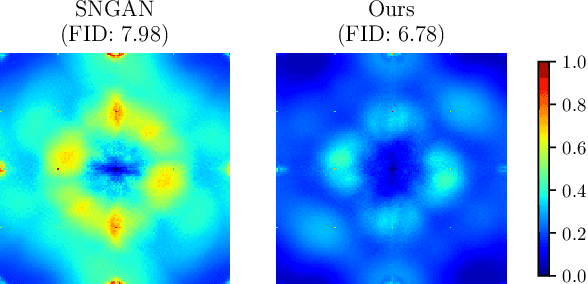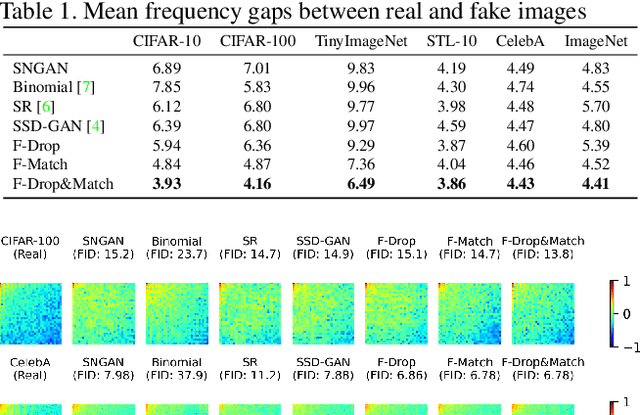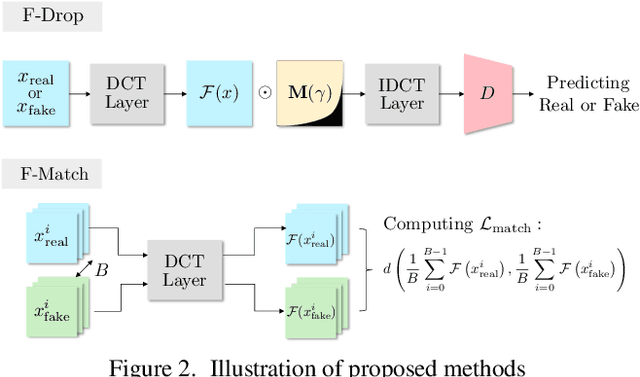F-Drop&Match: GANs with a Dead Zone in the High-Frequency Domain
Paper and Code
Jun 04, 2021



Generative adversarial networks built from deep convolutional neural networks (GANs) lack the ability to exactly replicate the high-frequency components of natural images. To alleviate this issue, we introduce two novel training techniques called frequency dropping (F-Drop) and frequency matching (F-Match). The key idea of F-Drop is to filter out unnecessary high-frequency components from the input images of the discriminators. This simple modification prevents the discriminators from being confused by perturbations of the high-frequency components. In addition, F-Drop makes the GANs focus on fitting in the low-frequency domain, in which there are the dominant components of natural images. F-Match minimizes the difference between real and fake images in the frequency domain for generating more realistic images. F-Match is implemented as a regularization term in the objective functions of the generators; it penalizes the batch mean error in the frequency domain. F-Match helps the generators to fit in the high-frequency domain filtered out by F-Drop to the real image. We experimentally demonstrate that the combination of F-Drop and F-Match improves the generative performance of GANs in both the frequency and spatial domain on multiple image benchmarks (CIFAR, TinyImageNet, STL-10, CelebA, and ImageNet).
 Add to Chrome
Add to Chrome Add to Firefox
Add to Firefox Add to Edge
Add to Edge